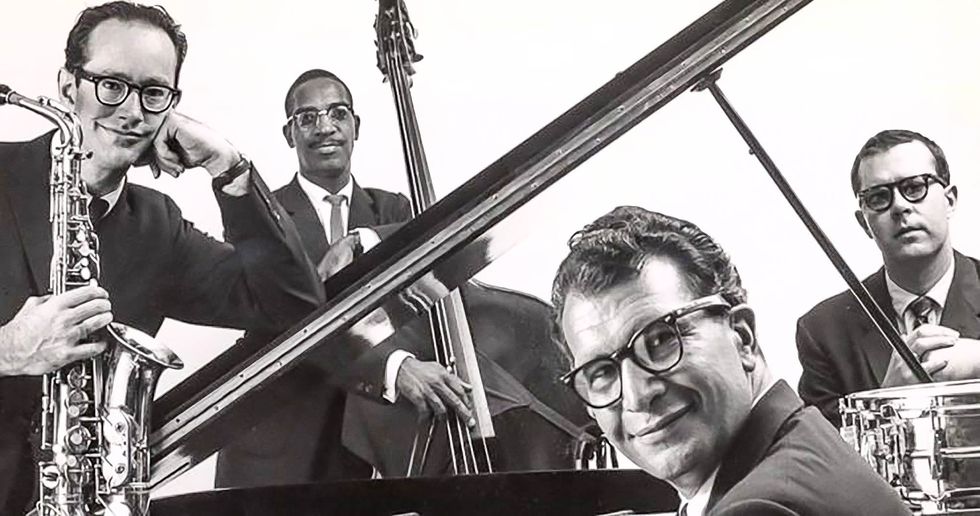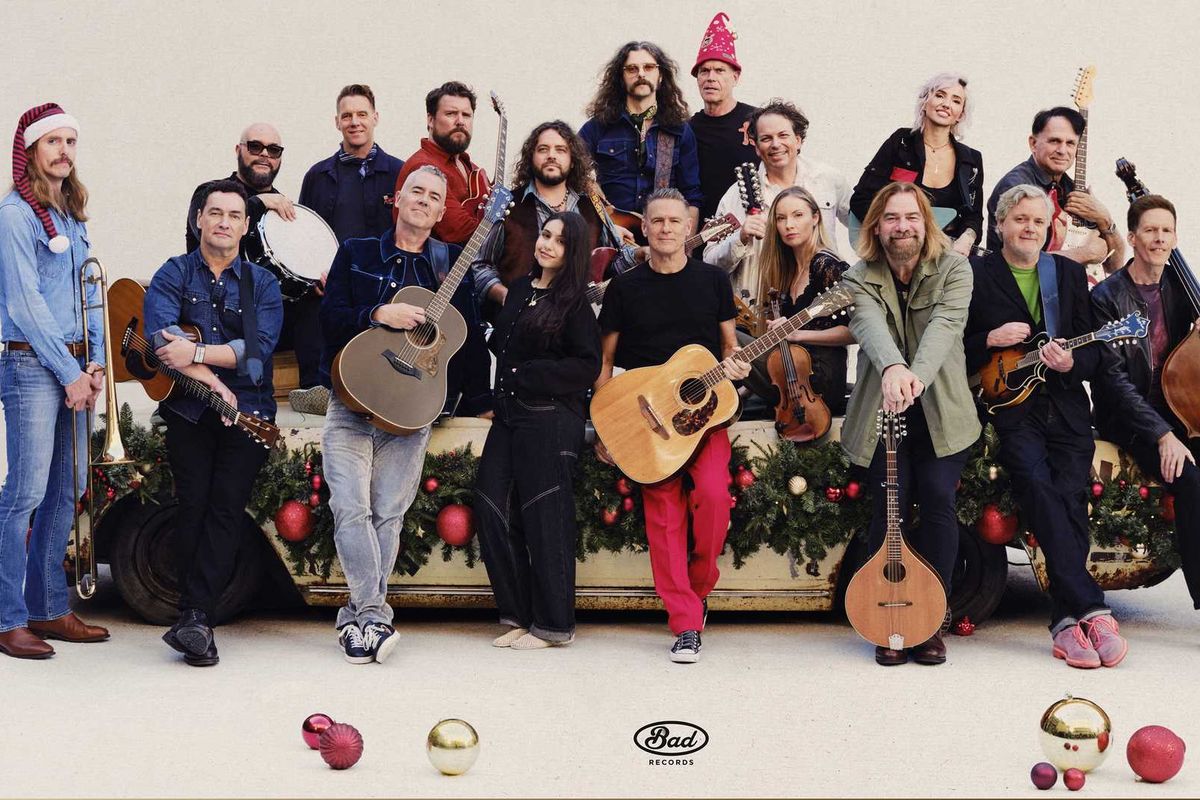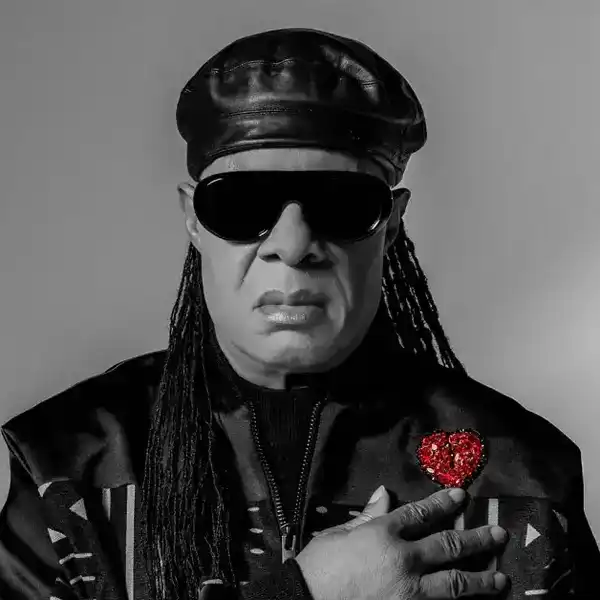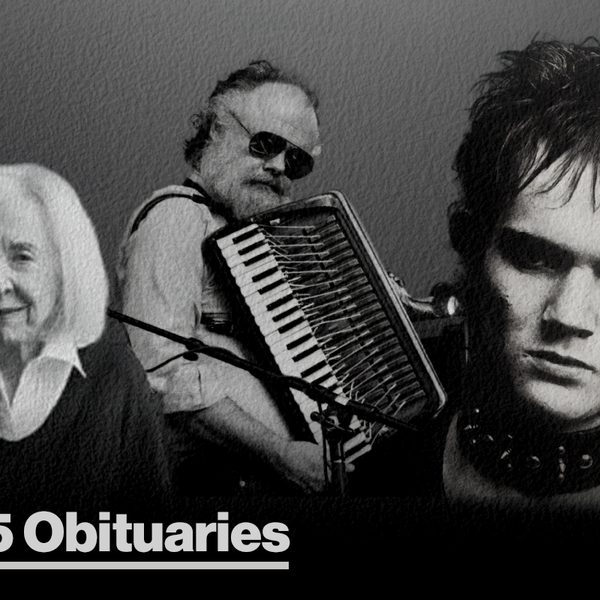The Dave Brubeck Quartet Take Five!
When brother Wayne and I were in our early teens, Dave Brubeck’s “Take Five” was one of the most requested pop/jazz songs of the day and the biggest-selling jazz single of all time. That popularity stretched over two gigging seasons. I don’t know if learning the song attracted many girls, but it sure earned us respect amongst musicians.

By Bill King
When brother Wayne and I were in our early teens, Dave Brubeck’s “Take Five” was one of the most requested pop/jazz songs of the day and the biggest-selling jazz single of all time. That popularity stretched over two gigging seasons. I don’t know if learning the song attracted many girls, but it sure earned us respect amongst musicians.
We even made the pilgrimage to the Brown Theater in nearby Louisville, Kentucky for the sole purpose of witnessing our heroes The Dave Brubeck Quartet play the song live, especially that extended Joe Morello drum solo. I can still hear the kit reverberate in the hall. “Do bap a dap, boom bam – do bap a dap, boom bam” - a swinging 5/4 beat. Not long after, Wayne and I were summoned to play “Take Five” on WHAS-TV as part of the Crusade for Children charity show. This also meant we had to teach the house drummer how to play in 5/4.
Wayne played alto sax, and I played the piano. We shuffled our way through rehearsal and then moved on to the main event. “Ladies and gentlemen, – all the way from across the Ohio River and from Jeffersonville, Indiana to perform for you the Dave Brubeck Quartet’s hit recording, “Take Five” – the King brothers. Take it boys.” I count the tempo in, and the quartet hits the downbeat spot on. Then something odd happens. Beats one to four, drop in sequence, but never beat five.
Suddenly, the brothers find themselves in the weirdest bandstand crossfire imaginable trying to squeeze melody and rhythm into a squared beat. I glance over at the drummer and notice he’s swinging a metre of his choosing - one fit for a perky dance band. The miscue nearly transports the “stress” brothers to the emergency room of downtown Norton Hospital. I attempt to hand signal beat five. The staff drummer smiles back. I then try to cram Paul Desmond’s beautiful melody into four-bar sequences, to no avail. From the corner of an eye, I could see cameras glide about the room and one close in on my hands. It was then I almost panic. I thought, what if viewers catch me fumble or falter? I’m too young to die on live TV.
I could read Wayne’s eyes. He looked as if he’d been struck by an oncoming bus. At song’s end, we are clapped off and praised as if we were child prodigies. The episode is one Wayne and I talk about to this day. The brothers had little understanding that most folks watching at home through those Admiral televisions were more focused on getting a receptive black and white picture, not “junior jazz” time especially with Mr. “Tennessee Waltz" Pee Wee King waiting in the wings. It was a close call. Hours later, in my troubled mind, I still thought I could still be sentenced to jazz prison - even hard labour and charged with “botched time.”
“Take Five” was the centrepiece for Brubeck’s top-selling jazz side, Time Out. It was the first jazz album to sell over a million copies and in 2011 the RIAA certified it at over 2,000,000 sales worldwide. Miles Davis’s “Kind of Blue” is still the top-selling jazz album of all time, surpassing four times platinum.
“Time Out” is all about experiments with time. “Blue Rondo a la Turk,” which Brubeck wrote after hearing a group of street musicians playing a traditional Turkish folk song in 9/8 during a tour of Eurasia, starts in 9/8 – swings 4/4, then fluctuates between Turkish and western rhythms. In the composition, “Three to Get Ready,” Brubeck alternates between 3/4 and 4/4. “Everybody’s Jumpin” and “Pick Up Sticks” are situated in a 6/4 rhythm zone. All of this in a concise thirty plus minutes, long-playing album.
Decades later, Brubeck said this to me in an interview. “When “Take Five” first came out, many guys were fantastic musicians who couldn’t play it. Locally, a few jazz snobs got impatient with me. “You can’t play jazz in 5/4.” In fact, at the time, there was a meeting of some excellent musicians like members of The Modern Jazz Quartet, Ornette Coleman, Gunther Schuller and others discussing various musical matters. Some of them said I shouldn’t play jazz in these odd time signatures.
A black doctor in the crowd named Willis James stood up and started singing in some African tribal language. When he finished, he asked if anybody knew what time signature he had just sung in. It was so complicated no one responded. He said, “That was in 5/4. African music is very complex. Why are you condemning Dave for experimenting with this when he’s on the right track? I couldn’t have asked for a better endorsement.
My interest in African music was piqued after hearing about Dennis Roosevelt’s expedition into the Belgian Congo in the mid-40s. I knew then that jazz people weren’t listening to what was coming out of Africa, so I tried to familiarize various musicians with the music. But the unfamiliar and challenging time signatures caused a lot of people to shy away from it. Of course, with today’s globalization, it’s hard to believe it caused the problems it did back then. I started talking about world music in the ‘40s, but no one knew what I was talking about. I said someday we’ll hear music from all over the world. I remember saying, “Don’t be surprised if you hear the Chinese playing jazz at some time. That has happened.”
For a good fifteen plus years, there was rarely a day JAZZ.FM91 didn’t include “Take Five” in its playlist. Other versions? Al Jarreau’s comes to mind as one of my favourite covers from 1977.
















